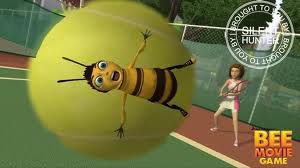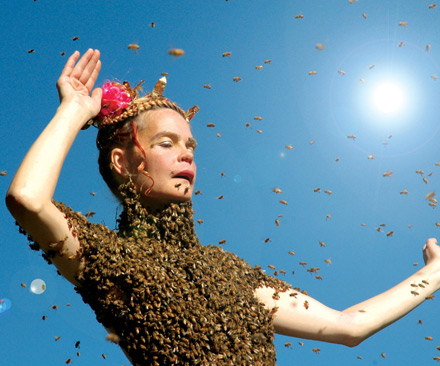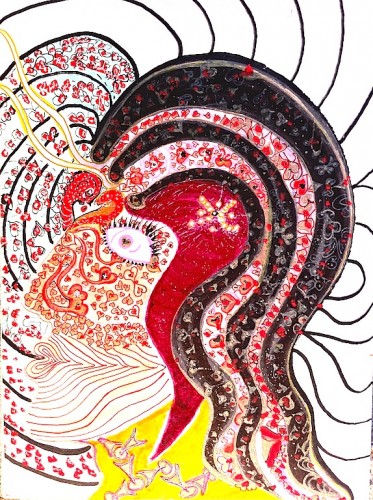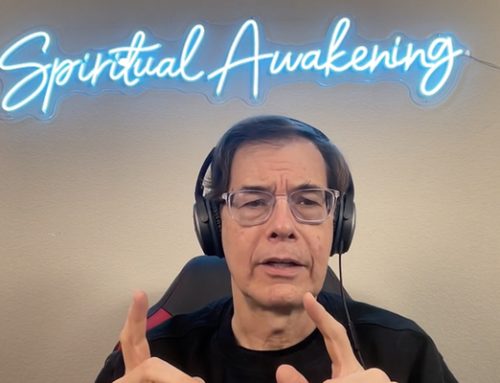Hello and happy day to All!
Today is technically my day off so I’m off for a massage and steam.
Rory flew home last night after three weeks of rest and play here at my house and the institute.
I always enjoy Rory’s company. He’s an excellent therapist and I get the benefits of being able to swap therapy sessions with him; by the time Rory and I part company, we are usually both feeling much more balanced.
He’s also fun for me to be around because he’s one of the few people in the world that doesn’t expect me to be someone other than who I am. Thanks Rory! I’ll be seeing him again in Toronto though in August when I teach HLC2 and deliver conference sessions at CanFitPro.
Vidya gave me today off because I have two workshops in a row starting tomorrow morning with zen In The Garden and then my Vitality Building workshop Saturday. I so love teaching how people can connect to their deeper truths and gain the tools through the methods I use to help me (and my clients) stay healthy. There are still spots left in each workshop if any of you choose to join us!
PLAY YOUR WAY TO SPIRIT-SOUL!
In previous posts, I’ve described the general stages of soul growth and development. I described that a soul is essentially Consciousness contained within. Wherever there is an inside and an outside, there is a soul.
The human being then, is the product of natural synthesis; we are mineral-soul, plant-soul, animal-soul and from that synthetic combination of body-mind states, emerges the human-soul. The human soul begins as a biological-soul, which is essentially the animal-soul; the animal-soul includes the mineral and plant-soul intelligence or wisdom, which is contained in the DNA and the cells at large.
When a human body is created through gestation, it naturally becomes active in the womb. The neonate’s activity levels are both innately driven and under significant influence of the mother. Her physical, emotional and mental-state are conveyed to the neonate via her blood, hormones, fluids, and energy field (aura).
Because the mother’s interaction with the father and others influence her internal-state, each interaction changes her biochemistry, which in-turn changes her energetic state. Any change in mother’s biochemistry and/or energy-state quickly induces changes in her child’s biochemistry and energy-state or field.
If mother is happy, and her interactions with others at large facilitate that state, the neonate responds in kind. Because the neonate lives in her fluid-filled uterus, any movements of the mother essentially move her child. If her movements are rhythmic and playful, the child’s movement (motor) influences reflect the mothers state of being.
If mom enjoys dancing to music, her child hears and feels the music and experiences her joy. Experiencing mother’s joy with music and movement teaches her child that when listening to music and moving the body freely, joy is created.
The more dynamic and multiflorous mother’s influences on the child, the more compressive the child’s physical, emotional, and mental base-state becomes.
Having learned playfulness from mother, the child is born with an imprint of mother’s state, which is inclusive of her interactions with every person, place and thing she’s interacted with, particularly during the gestation period.
With an optimal state of base-development (programming), the child naturally expresses itself within it’s perceptions and their concordant expressions of body-mind behavior.
Today, there is literally masses of research showing that the body and the mind of a child grow and develop together in a lock-step fashion; the book, Wisdom Of The Body Moving by Linda Hartley has a chart showing the interaction of biological systems and how they develop with each stage of physical and mental development.
[amazon-product align=”left”]1556431740[/amazon-product]
What is now well born out of the research is the importance of play for healthy development of children. When children, or adults play in an unbound environment (a forest or field are unbound; a video game represents a bound environment), any number of sensory and motor combinations may be created and experienced as a result of interacting with the environment.
To exemplify this important point, lets consider that mom lives in New York city. She’s the typical busy city-woman married to the typical busy city-man living a typical city life. Most parents in that sort of environment will offer their child minimal opportunity to play in an unbound environment (such as a park) because of the time involved and the fear that the child may be hurt, snatched, or otherwise.
Since both parents are computer literate and have come to see the computer as an essential survival tool, they are very likely to introduce their child to computer games when he or she is quite young, sometimes well before they can read. They will perceive this as a safe means of play because the child is bound to the computer. The child is unlikely to fall off a computer and hurt itself and is perceived to be playing in a “safe environment”.
Wanting their child to understand something about nature, mom and dad may buy a computer game called, “Catching Bees”.
The child learns to interact with the computer game. The child learns to move the joy-stick on the game. The child learns something of what a bee is. It sees its colors, that it has little wings, and may even hear the buzz of the wings as sound included in the game.
When the child wants to catch the bee, it doesn’t run after it. It moves a joy stick with one hand in very tiny movements that are coupled with activation of the postural muscles needed when sitting (only).
There is almost no bio-motor (life-movement) development what-so-ever, not to mention that activating the postural system in sitting only trains the neck, shoulder and upper back region; the child sinks into a slump and hangs from the lower thoracic and lumbar ligaments; research sited by Karl Lewit, a medical doctor from Prague shows that in as little as a few minutes, a seated child’s postural system fatigues and they spend the rest of the day hanging from and stretching spinal ligaments.
This posture leads to a bleak future for children because as they attempt to play physical games, their bodies begin to hurt and break down very quickly.
That considered, let’s look at the difference between “Catch The Bee” on computer vs. actually going out into a field or forest and playing the same game.
When a child in an unbound environment interacts with a bee, the following events occur:
- All the child’s sensory motor functions are activated, not just the joy-stick and upper-body. Unlike sitting in a chair, the child will have to learn to balance itself during any and all movements it creates to chase and catch the bee. This stimulates the entire body-mind construct resulting in progressively enhanced interactions between the child’s biological and psychological systems.
- All colors, textures, shapes, sounds and movements are recorded and represent authentic interactions with it’s world, not a cyber -world.
- The bee is real. It has color, shape, sound and moves in three dimensions. The computer bee is a two-dimensional impersonation and all representations of such a bee are likely to be manufactured imitations.
- The real bee can sting you! The computer bee can’t. Therefore, the child is at risk of believing that it can do to real bees what it does to computer bees. This may prove problematic for many when you consider how many ways computer games program a child with ideas that don’t interface functionally with REALITY.
- The child playing “Catch The Bee” in an unbound environment will naturally stimulate and fatigue all relevant bio-psychological systems, leading the child to a natural rest-state. Any foods and toxins will be more completely metabolized, and therefore all related biological systems are learning to function naturally.
- The child playing the game on a computer is likely to be eating and drinking substances that are highly stimulatory and toxic, yet, there is minimal demand on the body. This lack of stimulation results in the child’s body being flooded with sugars and toxins, which dis-integrate its biological and psychological systems, and therefore, the child’s development is retarded.
The child playing computer games or playing in any bound environment will naturally have rapid development of specific audio-visual skills and mousing skills.
It is likely that the child will quickly develop a library of ideas and is likely to be rewarded for achieving advances in the complexity of the game. The child will be deemed “good”, quite often, because they are playing in such a way that they are easy for busy parents to manage.
The child is more likely to feel loved and rewarded in this environment, yet, when he or she gets to school to participate in physical play or sports, may very likely to be underdeveloped compared to kids raised more naturally.
This often begins a process of negative association with regard to natural physical challenges and the child soon learns to avoid them – they are deemed stressful and often attract negative attention from teachers and other children.
This child is very likely to be a patient to doctors and therapists for the rest of its life!
The child may also be highly likely to be managed by drugs! It’s soul is shrouded because most of its essential bio-psychological systems are imbalanced and it is challenged to interact with reality effectively.
Sadly, many children today are much happier living in a virtual world where it’s functional capacity is limited only to select regions of the brain and motor system.
Without a computer, this child may feel naked and afraid, exhibiting symptoms of restlessness or ADD(H) behavior. Without something to feed it ideas and challenges, it has no idea how to stimulate itself.
This child is HIGHLY CONDITIONED and has never truly learned to play!
GROUNDHOG DAY!
Rudolf Steiner and other spiritual researchers have demonstrated that any developmental block that occurs in a child’s early development repeats itself in each successive stage of development throughout adolescent and adult life until it is completed.
I’ve found this to be very true in my work with people (and myself!) in my career.
The developmental stages of the body-mind of a human being generally repeat themselves in seven-year cycles. Therefore, any ill-development occurring in the first seven years of life will imprint themselves into each successive stage of growth and development.
Simply stated, this is because each successive stage is built atop, and therefore is co-dependent upon each earlier stage.
If you simply think of the process of building a house or building, it is easy to exemplify what I’m sharing here. The fist thing one must do to effectively build a building is to dig a foundation, set all the anchor points appropriately, and pour cement to create a stable working foundation. The accuracy and completeness of the foundation determines how challenging it will be to build a level floor.
Once the foundation and flooring are put in place, framing walls begins. Once the walls are up, the rafters for the roof can be mounted. Then the electrical and plumbing is put in and finally the finish carpentry can be completed. If the foundation and floor are not level, or are built out of the wrong combination of materials, or the soil is too unstable to contain the foundation, the walls, roof, windows, doors and cabinets will express the imbalance in the foundation.
Most people lack the knowledge to understand this reality, and therefore, spend untold amounts of money fixing windows, doors, cabinets, and leaks in the roof. No matter how much “fixing” one does, the foundation continues to deteriorate. As the home ages, the problems repeat themselves year by year until the foundation is restored.
Each stage of the developing house or building represents a stage of human growth and development.
When a child doesn’t learn to play in the first seven years of life – the most foundational, and therefore essential stage of development – it will relive it’s deficits with each additional stage of development.
As the child’s mind grows in complexity, it adds psychic weight to the child’s body; more to remember, more to do, more expectations and obligations, more distractions, and !less play!
A child that doesn’t understand or connect to variables of nature, or even it’s own nature can never feel capable of creating safety and security in it’s internal or external environment unless it is in the environment in which its programming emerged.
Today, creating safety and security is a challenge, and for most adolescents and adults unrealistic due to the changing demands and responsibilities that emerge in each successive stage of development.
As the child raised in bound environments grows and develops, it becomes mentally dominant relative to its physical capacity to co-create. In other words, the child becomes top-heavy – heady.
In adolescence, the number of interactions with others, and therefore expectations from others increases significantly.
Once the child leaves home and has to attempt supporting itself, the complexity of it’s life is magnified accordingly. All the while though, the child still lacks the capacity to create safety and security within, and within a variety of environments.
Sadly, the result is a progressively diminished capacity to feel safe and create a safe internal and/or external environment. Such children grow into people that are often mentally sharp, but physically and often socially dull.
They are like a knife that has been over-sharpened; they may be a computer graphics genius that is afraid to climb the stairs. They may be more inclined to internet sex sites and porn than they are inclined to engage in actual sex acts; the fear of the unknown is too great, to stressful, too risky for them; real bees sting!
In tracking peoples injuries and most stressful events in their life, I repeatedly see the very patterns Steiner spoke of repeating themselves. This is why I use and teach the science of infant development and use it to help adults heal and grow.
So, what can you do if you’ve found yourself or someone you love in the story I’ve shared today?
PLAY AS HEALING MEDICINE
As I’ve highlighted above, the most effective forms of play are unbound. This means there is minimal body-mind constraint or limitation.
Climbing a mountain is unbound; driving to the top of a mountain is an experience bound by the limitations imposed by the car. The car has windows that allow interaction with some of the natural elements and the view on the way up the mountain is one of that which natural.
Climbing a mountain on a computer imposes many more limitations, and therefore, is bound to a greater degree than the car.
Art As Play
In the above image of a drawing I created last weekend, you see an example of unbound play. I actually drew this drawing in my rock garden while I was stretching and exercising to balance my body.
Sometimes, I was laying on my back stretching my abdomen while drawing. At other times, I had one foot up on a stone stool and was in a deep lunge position while drawing. Sometimes, I was kneeling or sitting. Other times, I was drawing freehand while standing.
The way shapes and forms are created changes depending on the position I’m in, even when I’m drawing the same shapes, such as hearts.
If you were to try and trace my drawing, you would find that you couldn’t do it accurately if you stayed seated. You would actually have to keep moving your body until you could authentically recreate each shape as it appears in my drawing.
If you are healthy enough to feel light, color and shape or form energies, relax yourself as you look at the drawing and you should feel movement occurring within yourself.
One with such skills will feel their body being drawn into positions representative of the position I was in while drawing the section of the drawing they are looking at.
This represents unbound art, which has a notable different look and feel than if I had tried to create this while staying seated the whole time. But only a balanced body-mind could perceive this as a general statement.
Any time you can engage anyone, from child to old-age in unbound art, there will be a healing, balancing effect.
The subconscious mind of the individual will naturally be attracted to the colors, shapes, modalities and positions that nourish it.
There is little need to give instruction; instruction comes at the risk of bondage! The only instructions given should be for the individual’s safety, or instructions on how to effectively use related implements (the differences between color pencils, pens and watercolors for example).
As a side note, as a therapist skilled in the use of healing art, I’m able to ascertain much about anyone by looking at key elements in their art, such as the colors, shapes, symbols and interrelated qualities of their art.
I can predict diseases in formation, as well as healing in formation quite accurately because I have intimate knowledge of how each such element influences my own body-mind construct, which I’ve spent years healing and developing so that I’m a reliable instrument of interpretation.
Any attempt at artistic expression, regardless of the medium chosen (paint, pencil, clay, stone, metal!) becomes an act of healing to the very degree that it isn’t limited by self-judgment or the judgment of others!
Parents need to be aware that their urge to control and influence the child’s expression is both a potential symptom of the etiology of the child’s disease state, or contributes to it! The child’s expression must be unbound.
As the child (or anyone) learns by practicing unbound creativity, they develop freedom-muscles so-to-speak. This experience is akin to what a baby bird would feel as it learns to experience the freedom of flight; mom can’t make it’s wings move for it, she can only kick it out of the nest into the unbound environment it must learn to survive and thrive in, or nature fails!
An easy, effective way to begin the healing process for literally anyone is to participate in unbound artistic play. Give it a try and enjoy!
Movement As Play
A huge percentage of children today are born into bound environments. Those that aren’t are quickly pushed into a bound environment called a school. Sadly, schools in the US have removed physical education at large. The most common reason I’ve heard for this is the need to conserve money to pay for!computers and other high-tech systems!
Here are some suggestions for learning and healing through movement as play:
Swiss balls: The Swiss ball (also called balance balls or stability balls) is a tool that mirrors your state of stability back to you.
Though perceived to be unstable, the ball on its own is very stable; you can leave it sitting in your living room and come back a week later and its right there where you left it – without an external influence, it is stable.
When anyone sits on, leans on or interacts with a Swiss ball, their capacity to align their center of gravity with that of the ball determines how much the ball moves. The more stable you are, the more stable the ball becomes.
Being round, there is an almost unlimited range of possibilities for unbound movement.
By exercising with a Swiss ball, all biomotor abilities are exercised creating whole-brain-whole-body learning experiences. The seven essential biomotor abilities we all need to function optimally are: strength, endurance, power, flexibility, balance, flexibility and coordination. For those of you wanting examples of how to use a Swiss ball effectively, I’d suggest the following programs I’ve developed:
Swiss Ball For Better Abs, Buns, and Backs: This is actually a spine rehab program I designed.
The exercises will improve all biomotor abilities and therefore, body-mind interactions. This program uses introductory exercises and offers an additional, more challenging level of expression for each exercise. By becoming familiar with the exercises in this program, one will develop a base motor-vocabulary or sensory-motor foundation from which they can safely expand upon.
Swiss Ball Exercises For Athletes: This program I developed as an advancement on the previously described program. It is ideal for athletic people or people that have mastered the exercises in Swiss Ball For Better Abs, Buns, and Backs, or who have the base conditioning to go right into athletic development. This program develops the essential motor skills needed in any sport. It is foundational in that regard.
Strong ‘N’ Stable: This program goes another level up on complexity. I now introduce the use of free-weights, cables, body blades and other interactive methods of developing strength and stability. This program offers a wide variety of unbound play opportunities, but is ideally suited to those that have mastered the exercises in the two previously described programs.
Wobble and Rocker Board Training: These apparatus can be used for unbound balance training and general motor skills development. We have a variety of them available through the institute.
We also sell BOSU balls, which is essentially half a Swiss ball. BOSU (Both Sides UP) balls are great for beginners because you can stand on either the flat, or the round surface, offering a wide range of stability options.
They are great for elderly people and children. Many children’s toy stores also sell wooden balance beans that can be pieced together. These are also excellent training for people of all ages.
Exercising In Nature: Any exercise, or even physical labor in a natural environment has tremendous body-mind developmental benefits. Hiking, biking, swimming, climbing trees, swinging from ropes, working in gardens! all these are excellent developmental activities. I love to create things out of rocks!
CONCLUSION
When we learn to express ourselves through unbound play, we learn freedom. We learn that we can create. We also learn not to attach to our creations; the tide will come in and take your sandcastle away; the rock stack will fall over; only you will remember the great move you created while climbing the rope; each wheelie on your bike comes to an end – so you cherish the experience and use the knowledge gained to create better and longer ones!
When we learn by participating in unbound play, we learn that what falls over or apart can simply be made better again. If it was fun the first time, it will be fun the next time too!
We learn how to be creative in our personal, professional and spiritual relationships. Through observation, you will find that the way in which a person engages in sex with others generally reflects their “play model”.
If you are bored with your sex life, try a Swiss ball!
As we learn to trust our own creative abilities, we become less and less influenced by the opinions (judgments) of others. We learn to appreciate their view, but also know that their view is just “a view”.
Through unbound play, other people’s opinions become options, not dictations. This teaches us that we can work with others, and diminishes the feeling that we are working for others. This is how freedom is experienced and learned.
In my life I’ve found that when I feel free, I don’t feel afraid – I can move in any direction – I’m unbound.
When you get together with a friend or group of people that share the capacity for unbound play, life’s interactions are truly fun! Stress levels drop significantly and one’s confidence in themselves grows significantly.
This is my dream for children. This is my dream for adolescents. This is my dream for adults.
When adults learn and live this unbounded way, they never become old!
Enjoy your unbounded play! Let’s make it a habit.
Love and chi,
Paul Chek







